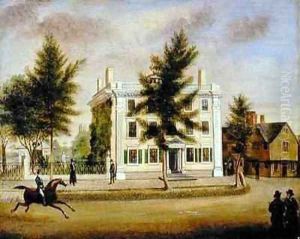Mary Jane Derby Paintings
Mary Jane Derby, later known as Mary Jane Derby Peabody, was an American painter born in Salem, Massachusetts, on October 23, 1807. Not widely known in the mainstream art history narrative, she contributed to the early 19th-century American art scene primarily through her watercolors and miniatures.
Mary Jane Derby was a part of the early movement of American women who pursued art professionally, a path that was not commonly accessible to women at the time. She studied with prominent artists of the period, such as Sarah Goodridge, who was known for her delicate miniature portraits. Through Goodridge, Derby developed her skills in miniature painting, a popular medium of the time for personal portraiture due to its intimate scale and portability.
Derby’s work typically consisted of watercolor miniatures on ivory, a common practice among miniature painters of the time. These works often served as keepsakes and personal mementos for the sitters and their families. Her clientele was primarily based in New England, and her work reflects the cultural and social milieu of her era.
In 1830, Mary Jane Derby married the Reverend Ephraim Peabody, and thereafter she was known as Mary Jane Derby Peabody. Her marriage marked a decrease in her artistic output, as was often the case for women of the period, who were expected to prioritize their domestic responsibilities over professional or creative endeavors.
Despite the constraints of her era, Mary Jane Derby Peabody's existing body of work offers insight into the early development of American miniature painting and the emergence of women in the professional art sphere. Her contributions, along with those of her contemporaries, laid the groundwork for future generations of women artists.
Mary Jane Derby Peabody passed away on February 4, 1894, in Brookline, Massachusetts. While her legacy may not be as recognized as that of some of her peers, her work remains a testament to the skill and artistry of early American women painters.
